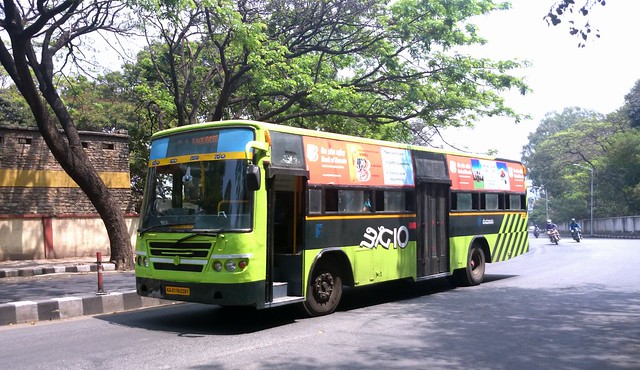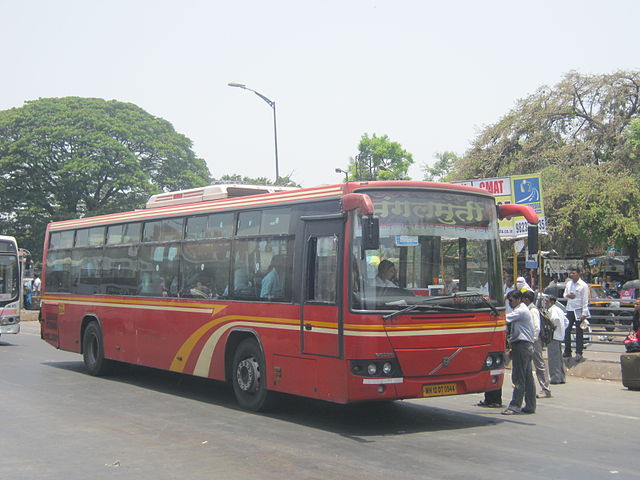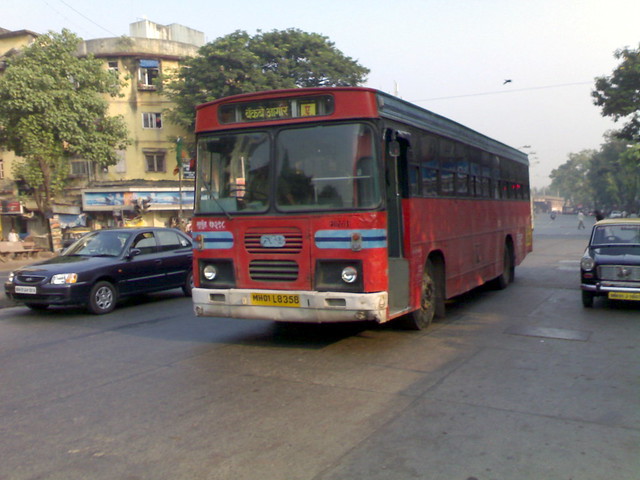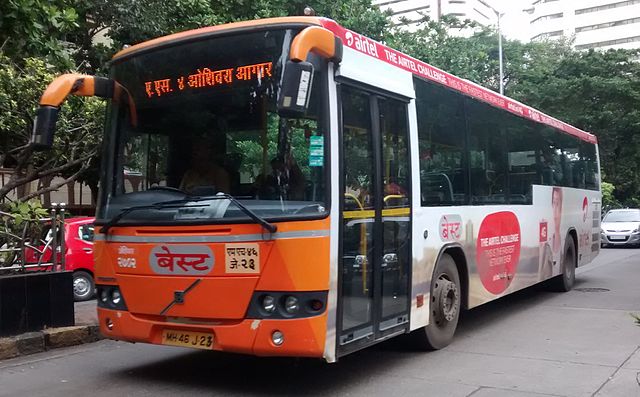Branding Public transport has been an exercise tried out by many transport bodies worldwide, to various degrees. Few have succeeded, while few have failed in this venture.
There have been multiple attempts by various transcos in India at Branding services. While Metro Rail services have had branding as an integral part of them from Day 1, the same is not the case with buses, as many of them have been in operation for several decades now. Here, I shall attempt to break-down the branding used by our transcos, as well as try and understand some lesser known details about them. In the event you want to see how branding works outside of India, there is a research paper here.
Note, I have used the term CBD numerous times in the article below, for those who are unaware; CBD stands for Central Business District. It is invariably a part of the core city area where many offices exist. It is the equivalent for what Americans often refer to as Downtown.

The first time I heard of branding of bus services was in 2009, when BMTC launched the Big 10 and Kendriya Sarige series of buses. These were touted as a major change in BMTC services, and the way the public viewed the services. The Big 10 covered the main ten highways of Bangalore city, starting from the CBD, and were numbered G1 to G10 in a clockwise fashion. The number of routes has now been increased to 12. The Kendriya Sarige, or Hop-On, Hop-Off [HOHO] series, were Volvo buses in blue and orange liveries, doing clockwise and anti-clockwise routes in the CBD, with a flat fare. The HOHO was discontinued due to poor patronage and the buses were used on regular Vajra routes. The Vajra, and Vayu Vajra concept itself was the biggest branding that BMTC has ever done for its services. Branding AC Tata Marcopolo buses as AC Suvarna, to keep lower fares was also a good exercise. Post the success of the Big 10, the BMTC rebranded some of the 500 and 501 series of buses, running on Outer Ring Road, as the Big Circle series. Services were numbered C1, C2, et al. Similarly, the Inner Circle, numbered K1, K2, et al, was launched for buses on Inner Ring Road, and Chord Road. This continued with the silver-coloured Metro Feeder routes, and more recently the Big Trunk series, which is basically just giving existing routes a new, more complicated number [Which is easier; 360B, or KBS3A?]

PMPML experimented with branding back in 2008-2009 with the BRTS, also called the Rainbow BRTS, with the PMPML procuring Volvo B7RLEs [with openable windows] to run on the bus lanes on Satara Road from Swargate to Katraj and Solapur Road till Hadapsar.

Now, let us move on to BEST. The BEST launched it’s Fort Pheri services in 2011. The Fort Pheri is probably the first branded bus service run by BEST in ages. Unlike BMTC, BEST does not brand its AC services. In fact, the BEST AC services, have a rather bad image, thanks to the Purple Faeries. So much for branding. So, BEST took their aging Tata Starbus fleet, gave them a pseudo makeover of sorts by painting them with a Fort Pheri Special livery. Some buses continue to operate with their original Starbus liveries, but most of them have been repainted to say Fort Pheri 1 or Fort Pheri 2 in Marathi. These buses were procured in 2004, break down very often, and thus were shifted to the Colaba Depot which is close to the route of these buses. They charged a flat fare, ran in clockwise and anticlockwise circles, and were an instant hit among office-goers in the CBD. A good move to make use of the fleet which was otherwise bleeding the BEST in terms of maintenance costs. Shortly after this, the BEST launched the Fort Pheri AC service. Unlike their non AC siblings, these buses had no special branding, but thankfully were not the Purple Faeries either. BEST decided to run all six of its Volvo buses from Oshiwara Depot to Backbay Depot on AS4, in the first six departures, park them at Backbay Depot, from where these buses would operate on Fort Pheri 1 and 2 AC till 3pm, before sending them back to Oshiwara as AS4. The remaining AS4 and A74Express would continue to have the Cerita buses on them.

Now that all the gyaan has been given, time to look at this whole exercise from a Marketing Point of View.
What does Branding of Bus Services entail? Why must it be done?
To answer this question, let us take a take a quick look at high-end services offered by two intercity transcos: MSRTC and KSRTC.
KSRTC has branded its basic Volvo B7R services as Airawat, with the B9R being branded as Airawat Club Class. Further, the Airavat Superia is a B9R with a pantry and Airvat Bliss has a toilet. The newly acquired Scania buses are branded as Diamond Class. Similarly, MSRTC has branded its B7R services as Shivneri and B9R as Ashwamedh, and has retained the same names for the new Regular and Dual Axle Scania Metrolink buses as well. All said and done, MSRTC still carries the ST legacy. It is known as ST, and ST is an official part of the logo [in Devnagari]. While the Mahabus, and Shivneri services were launched as premium AC services, people still associated these with ST. However, that has changed a bit. Last year, when I asked a traffic police officer at Dadar for the starting point of Pune bound ST buses, he told me “You’ll not get an ST bus, but only a Shivneri to Pune“.
Similar to MSRTC being called ST, BEST also has a brand readily available. The name BEST is a brand in itself. Unlike other transcos, BEST itself is a brand name. Similarly, in Tamil Nadu, TNSTC buses are referred to as Arasu Perundu which literally translates to Government Bus. Some transcos use a logo to identify themselves with, for example the Ahmedabad Janmarg, the Delhi Transport Corporation, Navi Mumbai’s NMMT, and even the BMTC. The BMTC logo is nothing but the Gandaberunda, which is a Mythological bird with two heads; used as a logo for most entities under the Government of Karnataka, even KSRTC and the other sister bodies in North Karnataka. Even BEST these days is seen with its logo, a bus inside a lamp, seen now as the watermark on tickets and often on the front of an AC bus, above the display.
Now imagine the following two scenarios:
- You live in the suburbs of Mumbai. You rarely come down to Fort, simply because you don’t have to. One day, you make it to CST because you need to go to the National Centre for the Performing Arts [NCPA]. Would you rather take a Bus number 108, or a Fort Pheri 1?
- You live in East Bangalore. You need to head to Banashankari one day. Would you rather take a Bus number 500A or a Big Circle C-1?
Thus, bus branding is an important exercise. There are several reasons why bus services must be branded, all with a marketing tactic behind it. Here are some of them:
- The most logical reason why anyone would want to market anything: To increase the number of customers and improve revenue streams. With the advent of cab aggregators like Ola and Uber, buses are losing out big time.
- To give a feel good factor to the commuter. Passenger comfort is crucial. In a city like Bangalore, a person may get out of a bus and hail a cab, or in Bombay, take a train, if the bus is not comfortable.
- A higher fare. A branded service is a premium service, it can have a higher fare, like BMTC does with the Vayu Vajra series, which have much higher fares than the regular Vajras. There are exceptions however, like the Atal Sarige, again run by the BMTC.
- Make optimum use of existing properties: BEST re-branded its aging, semi-retired, nearly decommissioned fleet of Tata Starbuses for the non-AC Fort Pheri, and the idle Volvo buses for the AC Fort Pheri. Similarly, when the Kendriya Sarige flopped, BMTC used the Volvo buses on regular routes to Electronics City and Bannerghatta.
At the end of the day, transport is very important, since our lives depend heavily on it. Not many of us are lucky enough to live close to our workplaces or daily commute destinations, and those of us who don’t, will end up taking public transport. When other things around us a branded, why not transport? If a person pays ₹180 for a coffee at Starbucks, instead of ₹20 at a roadside stall, he or she is doing it for the brand value. Similarly, one might walk in to a fancy parlour and spend ₹500 for a haircut, that the barber under the tree might charge ₹30 for. When everything else can be branded, and packaged as a premium item, why not transport? After all, a good transport system is not one that is used by all the poor people, but one that gets the rich to give up their cars instead.
Looking at BEST, it can certainly brand its services as premium, and offer a better travel environment to the daily commuter. BEST branded their Limited Stop Buses, plainly as Limited, and its Express services with the C-series of routes. It is now upto BEST to rebrand its AC services as well, as mentioned in the earlier post. Unlike BMTC, who branded Volvo and Corona services as Vajra and AC Tata Marcopolo services as AC-Suvarna, BEST branded all its AC services as AC, a move that MSRTC has also seemingly done. Unlike KSRTC, MSRTC treats the Shivneri and Ashwamedh on par and charges the same rates for the two.
I look forward to some interesting feedback from those who are in the marketing and branding scene. Please do leave your comments in the section below. If you liked this post, please do consider hitting the Flattr button below for some microdonation love.
![]()



